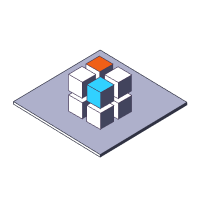Shifting regulations
It’s not news that distilled spirits are one of the most regulated consumer channels in the .U.S. States constantly change their tune on how and where consumers can purchase alcohol. Some states, like Colorado, previously mandated that liquor only be available in liquor stores and liquor-licensed drug stores.1 But in 2022, Colorado saw a change in permissions, allowing a certain number of retailers across the state to sell liquor like Costco or Sam’s Club. Whereas states like Nevada and California, permit the sale of liquor in grocery stores.1 Each year comes with updates to state laws, meaning that brands and retailers need to be ready for new markets and laws at any given time.
Although laws constantly change, consumer behaviors and preferences change just as often if not more frequently. Each year approximately three million Americans turn 214, meaning that three million or so Americans enter the liquor market each year. Couple this with the younger demographic shopping online more than ever, and liquor brands and retailers have more chances to place their products in front of new eyes.
A change in the liquor landscape
With changing laws and a shift to omnichannel shopping, brands and retailers are embracing e-commerce platforms that are grabbing the attention of liquor consumers. Brands like Shaker & Spoon and Flaviar are taking advantage of e-commerce by offering subscription style “boxes” that supply their buyers with a new cocktail or liquor to try each month. Applications like Drizly and Quality Liquor Store are tapping into liquor purchasing by offering a wide online selection for same day or large order delivery.
According to a 2021 Gallup poll, the average U.S. citizen consumes 3.6 alcoholic drinks per week with 60% of citizens claim that they consume alcohol.2 While this number has decreased since 2020, the options online and in store are giving consumers the ability to have their favorites delivered to them and encourage them to try something new.
Region specific trends
The NielsenIQ beverage alcohol database hosts a variety of region and state specific xAOC data. The report below dives into the top 5 spirits by region in the United States.
While most regions show vodka as the most popular spirit, Division 6 known as East South Central containing the states Alabama, Kentucky, Mississippi, and Tennessee shows American whiskey as the front runner. This is no surprise since Kentucky is the nation’s leader in whiskey production followed closely by Tennessee.3
Route to market precision areas
Using both internal and external granular data, NielsenIQ Precision Market Analytics creates models, forecasts and segmentations that highlight opportunities and optimal executions on the ground. This means that with NielsenIQ you can determine specifically which area suits your products best and how to properly position your product within these markets.
The high-level region data that is in the linked report below, is a snapshot into the specific information that is available. With precision area information, you can answer questions like:
- How
- What is the impact of demographics in my brand performance within a precision area?
- What is the ideal size of my sales force and where should they be distributed?
Precision areas are built to give retailers and brands the most specific consumer, census and sales data.




